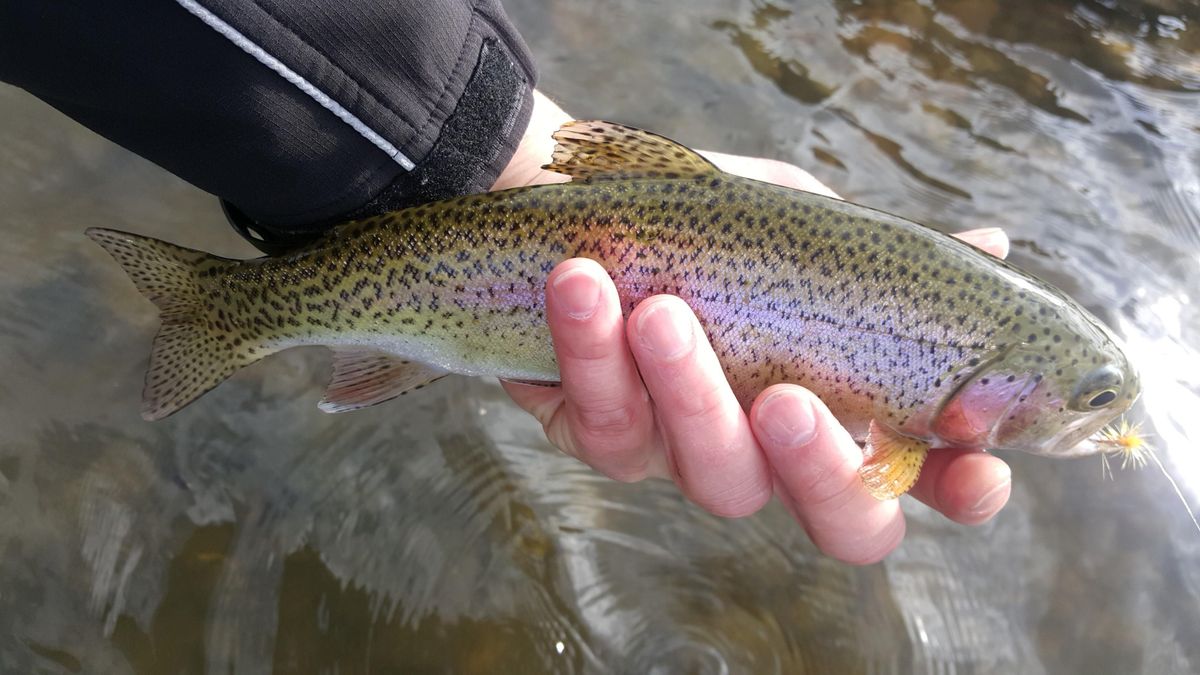Trout may change game for anglers at Lake Spokane

Lake Spokane has been undergoing a fisheries remake for nearly three years and a survey is underway to see if the effort is making a difference to anglers.
While traditional lowland trout lakes are in the spotlight this week following the season opener on Saturday, the Spokane River reservoir behind Long Lake Dam is the region’s newest trout fishing destination.
The year-round fishery known for producing bass, panfish and Washington’s state-record northern pike also has a relatively new batch of rainbows.
“There are some dandies in there,” said Chris Donley, Washington Department of Fish and Wildlife regional fisheries manager. “It’s become a really good trout fishery.”
Under a 2009 federal dam relicensing agreement, Avista has funded the release of 310,000 sterile rainbow trout in the reservoir over the past two years. Another crop of 155,000 catchable-size trout is scheduled for release in June after runoff has subsided to minimize the number of the hatchery-raised trout flushed downstream.
After the third season of trout stocking is completed this summer, the fishery will have three year classes of rainbows ranging to about 20 inches.
The hatchery-produced plants have clipped adipose fins to distinguish them from naturally produced trout.
Avista has committed to the trout plants for 10 years before the program is reevaluated, said Tim Vore, Avista’s environmental specialist.
Contractors hired by Avista conducted an angler survey in 2011, before the trout releases. This year, Avista has funded another study to see how the fishery and angler preferences may have changed.
Since March 1, survey takers have been moving randomly to public and private fishing access sites to contact anglers on and off the water.
The surveys will run through November.
According to the 2011 survey, boat anglers exceed shore anglers by more than two to one on the 24-mile long reservoir. None of the anglers surveyed at that time was targeting trout and overall angler effort was relatively low.
“This year’s survey will help determine if angler interests are changing because of the trout,” Vore said.
Followup angling surveys also are scheduled for 2018 and 2020.
It’s possible the trout could boosting bass as well as the northern pike that are known to move downstream from Lake Coeur d’Alene. Both predator species are fond of soft-finned prey and could be growing to large sizes on the introduced trout food source.
Apparently the predator fish don’t take major advantage of the large number of carp in the reservoir. Avista is conducting research on the bottom-sucking carp with a goal of reducing their numbers to improve water quality, Vore said.
Avista’s federal dam relicensing also requires increased stewardship for fisheries downstream from Long Lake Dam.
Contractors are making $11 million in improvements and upgrades at the dam this season to reduce dissolved gases caused by water plunging over the spillway, said Speed Fitzhugh, the utility’s Spokane River license manager.
Water supersaturated with nitrogen from a waterfall or dam spillway can be harmful to fish downstream in certain conditions, he said.
“The dam is in a challenging site to work in,” Fitzhugh said, referring to the rocky canyon that increases construction costs.
Starting Oct. 1, the level of Lake Spokane behind Long Lake Dam will be reduced about three feet to allow better access and an emergency escape route for contractor crews and trucks working on the dam. After that the lake level will evolve into its normal winter drawdown.
The dam project should be completed in December. Avista is authorized to take the level down as much as 14 feet during each winter.
Until then, anglers and recreationists on the reservoir likely won’t know the project is underway unless they drive to the Long Lake Dam overlook to watch the workers.
But anglers are slowly learning about the new trout fishing program in Lake Spokane, Fitzhugh said.
“It’s a put-and-take fishery and the fish are growing remarkably well,” he said. The surviving rainbows we put in two years ago are up to the 20-inch range.”
The trout can be spread through the reservoir and be especially available to anglers in spring and fall.
In summer many of the rainbows probably seek cooler water in the lower six miles of the reservoir closest to the Long Lake Dam. The water is up to 180 deep in that section, making fishing more difficult.